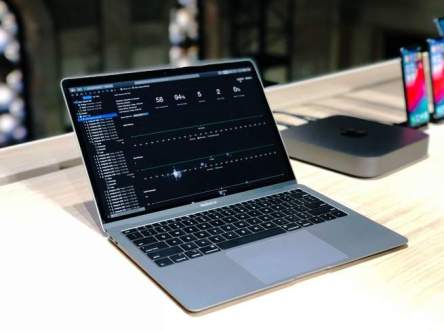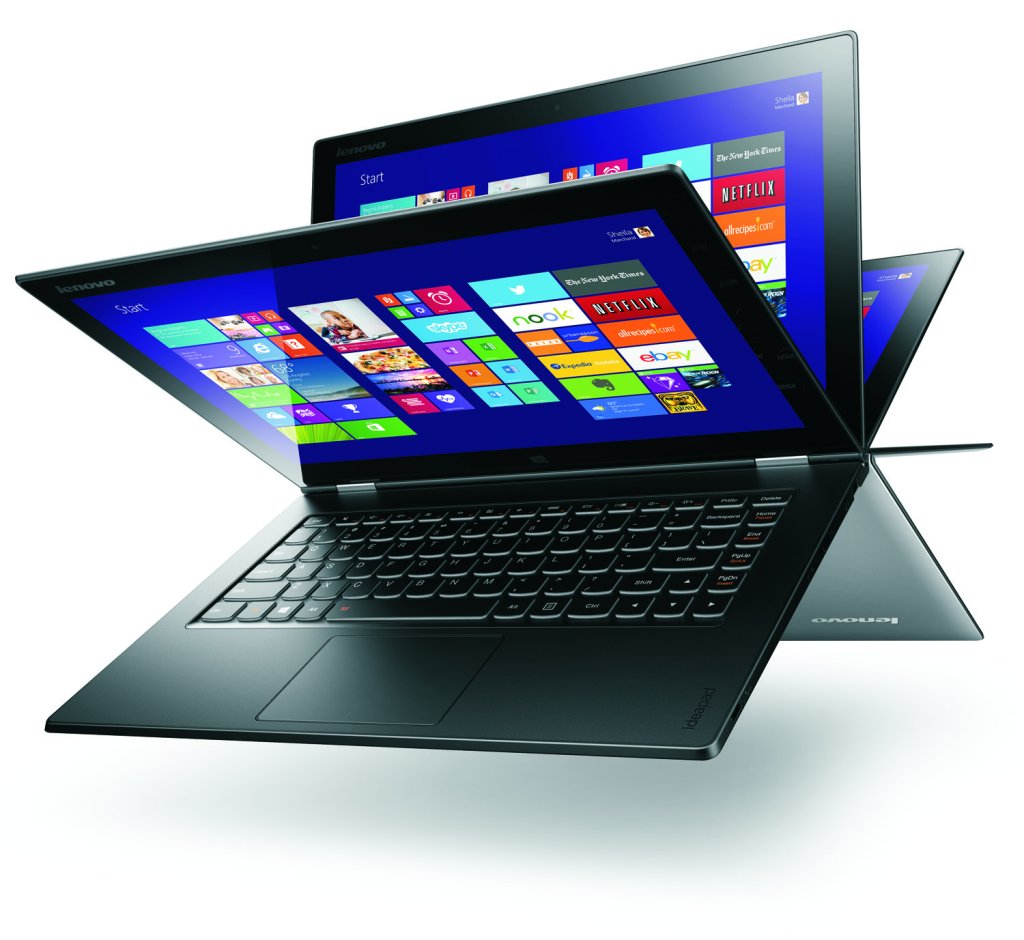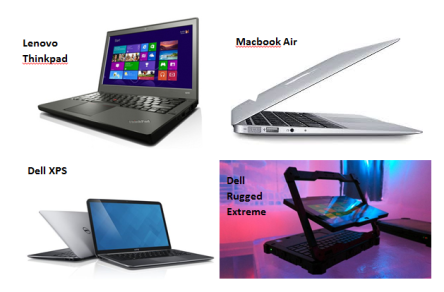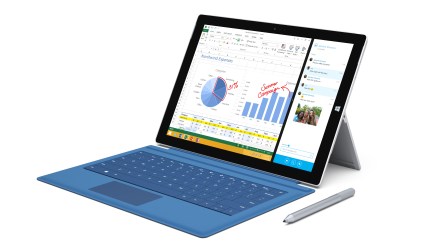Hardware announcements from Apple late last month seem likely to satisfy some longtime wishes of Mac aficionados. The MacBook Air, the company’s “budget” line of laptops and its most loved Mac, has finally been fully redesigned and reengineered, adding hardware features that have become standard on MacBooks and MacBook Pros. It now sports a crisp 13.3-inch Retina Display (think 4 million pixels) that has 48 percent more color than the previous version, while the chunky aluminum bezels were replaced with some slim black lines that drop the size of the laptop by 17 percent. The Retina display gives the screen more than four times the resolution of the prior Air laptops and is more than visible as soon as you lift the lid. If you’re familiar with the 13-inch MacBook Pro, know they share the same resolution. The only thing missing is the True Tone display, present in the latest generation of Pro laptops. Connectivity-wise, the device has two Thunderbolt 3 ports (USB-C), unfortunately on the same side, and sadly no more MagSafe. The novelty is Touch ID, now part of the package with a keyboard-based sapphire fingerprint scanner, which can also be used with Apple Pay. There is one more thing the Air has—the 3.5mm jack port. The keyboard has Apple’s butterfly mechanism and a Force Touch trackpad that is 20 percent larger than the one on its predecessor. The speakers’ power got a 25 percent boost in volume and emits twice the bass. Video calls, dictation and Siri should also show improvement thanks to the three-microphone array. The new Air now has Siri onboard and, for the first time, it’s made of 35 percent post-consumer recycled plastic (for the speakers) and 100 percent recycled aluminum to help reduce the computer’s carbon footprint...
Laptop Ban Update
Travel Security
The Department of Homeland Security releases new air travel security regulations, but there’s no need to leave your laptop at home…yet. Responding to pressure from US airlines fearing adverse economic impacts as a result of a widened ban on in-flight electronics, the Department of Homeland Security (DHS) decided not to extend its laptop ban beyond airports already included in the electronics prohibition. European airlines were especially vocal about their opposition. Alexandre de Juniac, director general, and chief executive of the group, which represents 265 airlines, wrote in a letter to Kelly and Violeta Bulc, the E.U.’s top transportation official that expanding the ban could cost $1.1 billion a year in lost productivity, travel time and “passenger well-being.” While those fears have been put to rest, for now, foreign and domestic airports and airlines will nevertheless face stricter security requirements moving forward as part of the DHS plan to anticipate threats before they become a reality. “The United States and the global aviation community face an adaptive and agile enemy,” DHS said in a statement. “Terrorist groups continue to target passenger aircraft, and we have seen a ‘spider web’ of threats to commercial aviation as terrorist pursue new attack methods.” Stay of Execution Currently, flights originating from eight countries – Egypt, Jordan, Kuwait, Morocco, Qatar, Saudi Arabia, Turkey and the United Arab Emirates – must relegate any electronic bigger than a cell phone to the cargo hold. Airlines affected by the electronics restriction saw passenger numbers drop dramatically, prompting airlines from other countries to vigorously lobby against extending the ban. Ultimately, the DHS dodged the issue, preferring instead to focus on upgrading security on the ground. While European airlines greeted the DHS announcement with studied relief, de Juniac remained cautious about the financial ramifications of the new safety...
Yoga 3 Pro
Takes on MacBook Air
Every once in a while, Microsoft and Apple reignite the classic Mac vs. PC battle through cleverly designed ads. The latest attack launches Microsoft’s latest notebook, the Lenovo Yoga 3 Pro, placed head-to-head with Apple’s famous 13-inch MacBook Air. The ad starts by comparing the 17mm ‘thickness’ of the MacBook Air with the 13mm ‘thinness’ of the Yoga 3 Pro, continuing with a series of moves that flaunt the flexibility of the tablet, showcase the touchscreen and tent modes of Lenovo’s latest convertible, while the Air is failing to “dance” in funny comparisons. The dance performance ends with the MacBook Air declaring ‘game over’ and closing its lid. The ad is a light sting at Apple, but it does reveal the direction the Microsoft is taking and where its marketing focus lies. Apple recently moved into the top five PC makers for the first time, thanks to an increase in Mac sales of 8.9 percent in the last quarter; that is translated into 5.52 million Mac sales over a period of three months. Besides the amusement these ads bring, it’s hard to determine whether or not they are effective. Surface sales more than doubled in the last quarter, but there are things left unsaid in the above ad about the powerful Air, advantages that Microsoft chose to not even mention with its latest ad campaign, more precisely price and battery life, and not necessarily in this order. Price-wise, there is a 30 percent differential: Apple’s laptop starts at $999 and Lenovo’s at $1299. This $300 difference is partly because of the high-resolution touchscreen display on the Lenovo. However, Apple’s choice to use an inferior screen on the MacBook Air helps it run for 13 hours without charging, while Lenovo’s Yoga 3 Pro 5,200mAh battery...
Best Business Laptops...
For Every Office
Today’s professionals can’t afford to miss a beat. Fulfilling client expectations often requires constant connectivity and reliable mobile access. We’ve narrowed down some of the best laptops for professionals that deliver the power, durability, and advanced features that you need to stay on top of the competition. Best Overall We hear so much about the Apple MacBook Air that we figured tech magazines must be getting some sort of kickback. Truth is, the MacBook Air family has earned its reputation. The ultralight, 3lb machine is effortless to lug around, which comes in handy when you’re running through airport terminals or dashing to a cab. Professionals can choose from 11” and 13” monitors, both offering quality displays at a wide variety of angles, perfect for quick meetings or demos around the machine. A sensitive touchpad makes navigation quick and easy. Both MacBook Air models come with a 1.4-GHz Intel Core i5 processor, which is powerful enough to get you through most work functions, though not the best available in its class. With 4GB of RAM and 512GB SSD you’ll enjoy speedy, robust operations even with multiple programs running. The FaceTime HD camera provides crisp, clear images so that you can get the most out of your web conference. With a battery life of 12 hours, you can complete the average workday without being tied to an outlet. Best Ultrabook While MacBooks are receiving their due, the Dell XPS Series—with screens ranging from 12”-18”—is causing a rumble of its own. It offers a matte aluminum casing that’s lightweight, durable, and exquisitely designed. The contoured keypad makes content creation more comfortable on the wrists and hands. The responsive touchpad facilitates easy operation, though with an optional Quad HD+ (3200×1800) touch display you may not need a touchpad...
Surface Pro 3
Slick, but no laptop replacement
“A tablet that can replace your laptop” was the catchphrase that introduced Microsoft’s Surface Pro 3 at its launch event. The world was waiting for Microsoft to enter the 8-inch tablet fray and launch a pure consumer device, without the Windows 8 interface (Desktop and Metro). Instead, the company went in the opposite direction. They decided to transition from tablets to notebooks via a device that runs on hardware too powerful for a tablet, but with a much thinner profile than a laptop. “Everything we’ve done up to this point is manifested in this product. This is our best device — we’re super proud of it,” said Steven Bathiche, in charge of the Applied Sciences Group at Microsoft. The shiny Surface Pro 3 has a few impressive features as well as some less positive aspects. The hardware – a roaring 4th generation Intel Core processor ranging from i3 to the mighty i7, 4 to 8GB of RAM, and storing options that go from 64GB to 512GB; The display – the screen aspect ratio closer to 3:2 compliments the tablet-face, being much better than the 16:10 that most Android tablets chose, and adds to web usage (16:9 and 16:10 are more suited to video) also on the tablet side Surface has the multi-touch feature and a vivid resolution of 2160 x 1440; Windows RT excused – removing this confusion is constructive; Battery life – the nine-hour battery life (on paper) puts it in the “all day device” category; Weight and thickness – we like our devices light and thin these days and Surface Pro 3 holds the award for the thinnest Intel Core product so far – 11.5” x 7.93” x 0.3”; it weighs 2.42lbs with keyboard attached; Target market – Surface Pro 3 doesn’t...





